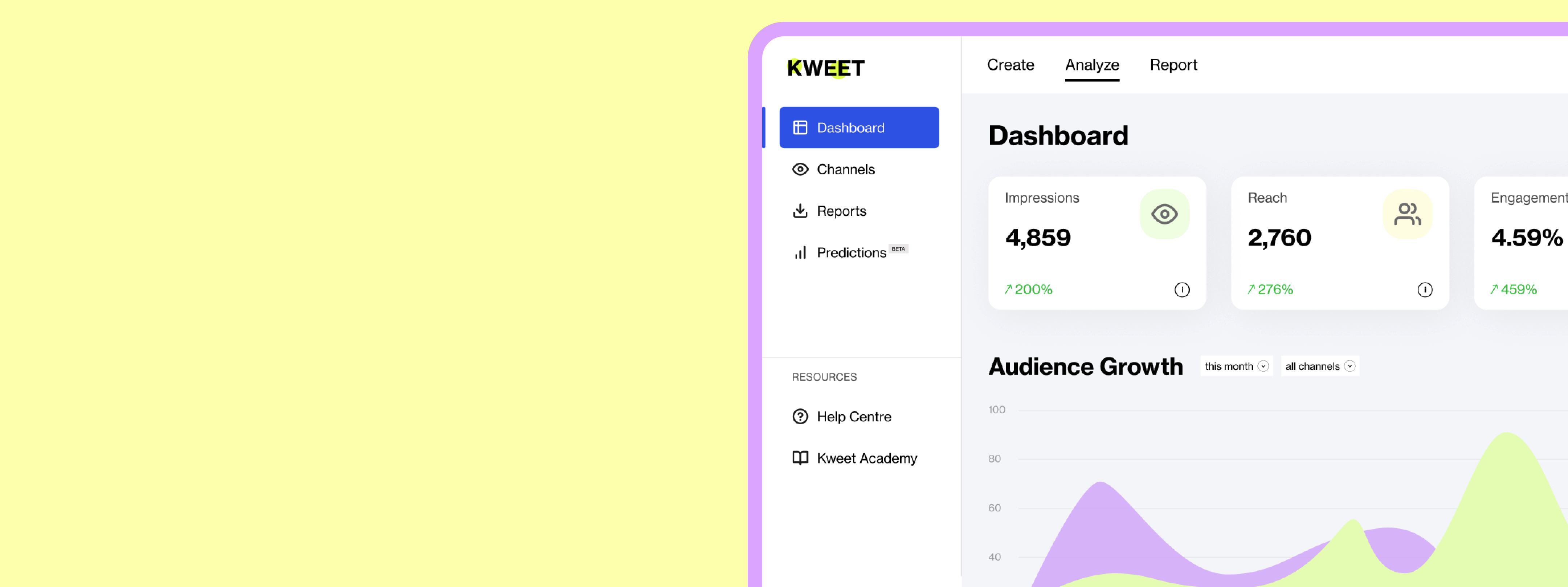Mental Health Awareness Month rolls around every May. And every year, nonprofits flood social media with green ribbons, motivational quotes, and maybe a stat or two about depression or anxiety. But here’s the thing: awareness without intention isn’t impact. Reposting a few graphics or writing a “mental health matters” post doesn’t move the needle – not on stigma, not on support, and definitely not on engagement.
If your organization wants to run a campaign that reaches people, resonates deeply, and builds momentum beyond just May, you need to go deeper. This isn’t about going viral. It’s about being real, being strategic, and showing up consistently for your community.
Let’s talk about how to do that – step by step, without the generic checklists.

Start With One Clear Purpose
Most mental health campaigns fall flat because they try to do too much. One post is about burnout, the next is about suicide prevention, and somewhere in the mix, there’s a fundraising link. It’s well-meaning, but confusing. If your audience isn’t sure what you want them to feel, learn, or do, they’ll scroll past.
So before you even think about content, settle on one driving goal. Maybe it’s to normalize therapy in your community. Maybe it’s to spotlight teen mental health or to get more men talking about anxiety. Whatever it is, get specific. When your purpose is clear, your messaging gets sharper. And sharp messaging cuts through noise.
Understand What Your Audience Is Already Thinking
Mental health is personal. It’s layered. And everyone shows up to the conversation with different experiences – some supportive, some traumatic, some still unfolding.
That’s why effective campaigns don’t start with stats – they start with empathy. Ask yourself: What are people in your audience already feeling about mental health? Are they tired? Skeptical? Curious? Ashamed? Overwhelmed? Your content should meet them where they are – not where you want them to be.
One way to do this well is to listen first. What comments show up under your posts about mental health? What stories have people shared with your staff or volunteers? Use that raw material. It’s more insightful than any survey.
Build Around Real Stories, Not Generic Content
Generic messaging doesn’t inspire action. But real stories – messy, honest, lived experiences – stick. They humanize the issue. They build trust. And they’re what people actually share.
If you can, feature the voices of those who’ve navigated mental health challenges firsthand. That could be a volunteer who struggled with PTSD, a donor who talks about their journey with bipolar disorder, or a staff member opening up about burnout. Ask for consent, protect privacy, but share with vulnerability.
And don’t polish the stories into oblivion. People don’t connect with perfect – they connect with real. Leave in the hesitations, the doubts, the emotion. Frame them in a way that educates without pity and uplifts without glossing over the hard parts.
Content Ideas For Mental Health Awareness Month
1. Real Stories (Build Trust + Emotional Connection)
- A staff member shares their personal experience with burnout or depression.
- A volunteer explains why mental health matters to them – and how the nonprofit helped them heal.
- A past beneficiary talks about their journey to accessing care and the impact your program made.
- A supporter shares what changed their perspective on mental health stigma.
Post format ideas: short-form videos, quote graphics, reels with voiceovers, long captions.
2. Impact Made So Far (Demonstrate Effectiveness)
- “In the past year, we’ve provided X hours of counseling to Y individuals.”
- “Thanks to our supporters, 300 teens received access to free mental health workshops.”
- Before-and-after: share what life looked like for a program participant before support, and how it’s changed.
- Timeline of your nonprofit’s growth in mental health support since launching.
Post format ideas: Instagram carousels, infographics, short video montages, stat-based stories.
3. Educational Carousels (Increase Awareness + Engagement
- “What Is Anxiety Really Like? 5 Things Most People Don’t Know”
- “How to Help a Friend Who’s Struggling (Without Making It Weird)”
- “Depression vs. Burnout: What’s the Difference?”
- “What Therapy Is (And What It Isn’t)”
- “5 Grounding Techniques for Panic Attacks You Can Try Anywhere”
Post format ideas: carousels, reels with tips, animated stories, downloadable PDFs.
4. Social-First Stats (Boost Shares + Saveability)
- “1 in 5 adults experience a mental illness each year.” Source: NAMI
- “Only 43% of adults with mental illness received treatment last year.”
- “Mental health is the #1 reason college students drop out.”
- “Teens today are more likely to talk about mental health—but less likely to seek help.”
Post format ideas: bold stat graphics, reels with motion text, polls or quizzes in stories.
5. Calls to Action (Drive Support + Participation)
- “Sponsor a therapy session for someone who can’t afford it.”
- “Share your story to help someone feel less alone – DM us or use #MindTogether.”
- “Join our virtual event on mental health in the workplace. Link in bio.”
- “Help us raise $10,000 this month to expand our peer support groups.”
Post format ideas: story countdowns, action graphics, pinned post banners, livestream Q&As.
Use Your Channels With Intention, Not Obligation
Instagram isn’t your campaign. Neither is your newsletter or your blog. They’re tools. Your job is to choose the right tool for the message you’re trying to share.
Social media is great for emotional hooks and calls to action. Reels or short videos with strong captions can perform really well, especially when they feature a face, a voice, and a moment of honesty. Instagram stories can be used to run polls, answer anonymous questions, or share quick mental health tips. These small touches build daily relevance.
Your website and email list, on the other hand, are better for depth. This is where you can house full articles, mental health guides, or downloadable resources. Think: “How to Talk to a Friend Who’s Struggling,” or “A Parent’s Guide to Teen Anxiety.”
And if you’re working with limited bandwidth (which, let’s be real, most of us are), pick two channels and do them well. Don’t try to be everywhere.
Make Your Resources Easy to Access, Easier to Understand
If someone finds your content in a moment of crisis or confusion, they shouldn’t have to dig for help. Your resources need to be front and center. Not buried under three tabs or hidden behind “contact us for more.”
But beyond visibility, your language matters too. Avoid jargon. Say things plainly. Instead of “mental health intervention strategies,” say “ways to get help.” Instead of “community-based therapeutic models,” say “where to find a therapist near you.”
And always include more than one kind of help. Not everyone is ready to call a hotline. Some might just want to read. Others might be looking for a local group, a free app, or a private way to explore their feelings. Think wide and inclusive.
Know That Engagement Isn’t Always Visible
One of the trickiest things about mental health content is that people often don’t engage with it publicly. You might post a story that gets two likes – but twenty DMs. Or someone might read your blog post in silence, then reference it six months later when they finally reach out for help.
Don’t let surface-level metrics be the only gauge of your campaign’s success. Look for deeper signs. Did someone share your post in a group chat? Did your hotline see a spike in calls that week? Did you get an email from someone saying, “That post made me feel seen”?
That’s impact. And it doesn’t always show up in the analytics dashboard.
Make Mental Health Month a Beginning, Not a One-Off
Mental health doesn’t start in May and end in June. And the best campaigns treat Awareness Month as a launchpad, not a standalone event.
Keep the conversation going. Plan follow-up content. Revisit key themes later in the year. Highlight community questions that came up during the campaign. Celebrate progress, even if it’s small. When you show up consistently, you become a trusted voice – not a seasonal one.
And that trust opens doors. It leads to new donors. New volunteers. Stronger partnerships. Deeper community ties. It’s worth building.
Final Thoughts
You don’t need a massive budget or a perfect strategy to run a powerful mental health campaign. What you need is a clear purpose, a commitment to real connection, and the willingness to meet people in their mess, not just in their milestones.
Mental health awareness isn’t about shouting into the void. It’s about listening, sharing, and showing up in a way that says: “You’re not alone. And there’s help here when you’re ready.”
If your campaign does that – even just for one person – you’ve done something that matters.
